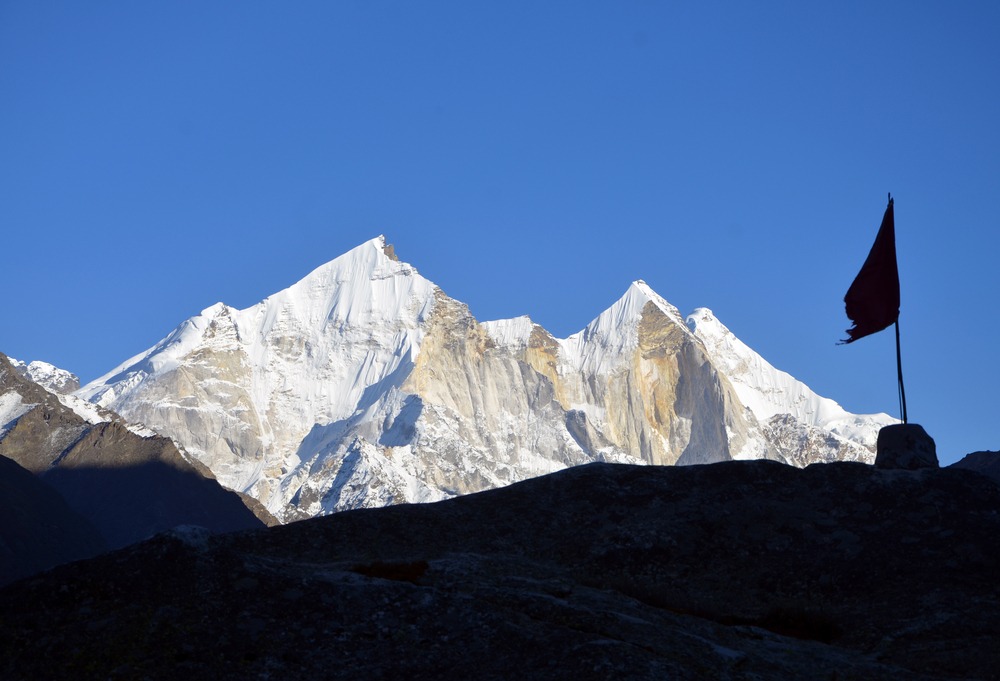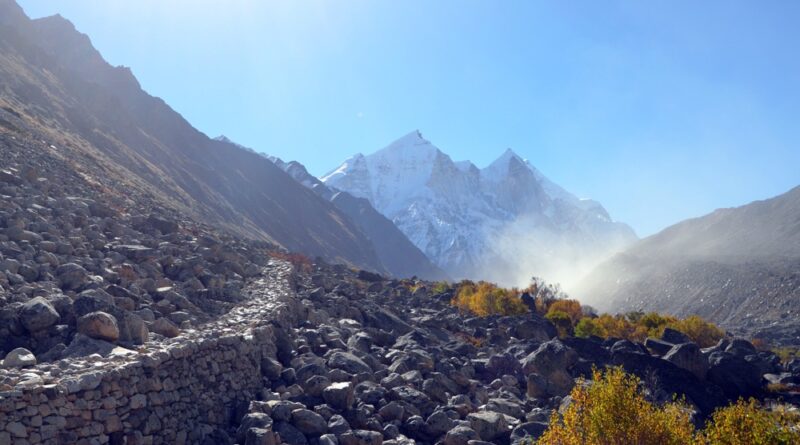Who Said Gaumukh Trek Was Easy? Facing the Hard Truths
Introduction: The Gaumukh Trek Unveiled
Picture this: you’re standing at the foot of the Garhwal Himalayas, eyes fixed on the mesmerizing peaks that beckon you towards an adventure of a lifetime. That’s the allure of the Gaumukh Trek, a journey that promises not just physical exertion, but a spiritual awakening amidst the raw beauty of nature. Join me as we peel back the layers of this iconic trek and discover the hidden truths that lie beyond its seemingly tranquil facade.
1. Gaumukh Trek: A Brief Overview
Nestled amidst the towering peaks of the Garhwal Himalayas, the Gaumukh Trek is a pilgrimage to the source of the holy river Ganges. It’s not just a trek; it’s a passage through time and space, where every step leads you closer to the heart of Mother Nature herself.
The journey begins in Gangotri, a town steeped in spirituality and mythology, where devotees flock to pay homage to the goddess Ganga. From there, trekkers embark on a path that winds its way through ancient forests, past gushing streams, and along precipitous ridges, culminating at the Gaumukh glacier, the birthplace of the sacred river.
But the Gaumukh Trek is not just about reaching the destination; it’s about immersing oneself in the sublime beauty of the Himalayas, forging connections with fellow trekkers, and experiencing moments of introspection and self-discovery amidst the grandeur of nature.
The trek spans approximately 18 kilometers (11 miles) one way, with varying levels of difficulty depending on the route chosen. Trekkers typically take two to three days to reach Gaumukh, with overnight stays at campsites along the way.
2. Preparation: The Key to Success
Before you lace up your boots and hit the trail, it’s essential to prepare both your body and mind for the challenges that lie ahead. Physical conditioning is paramount, as the Gaumukh Trek demands stamina, strength, and endurance.
A regular fitness regimen that includes cardiovascular exercises, strength training, and flexibility exercises will help build the necessary physical resilience for the trek. Including exercises like hiking, hill walking, and stair climbing in your regimen can also imitate the circumstances you’ll face on the path.
Equally important is mental preparation. The Gaumukh Trek is as much a test of mental fortitude as it is of physical endurance. Visualizing success, practicing mindfulness, and cultivating a positive mindset can help you overcome doubts and fears that may arise during the journey.
Researching the route, understanding the terrain, and familiarizing yourself with the challenges you may encounter can also help alleviate anxiety and ensure you’re adequately prepared for the trek.
3. The Terrain: Beauty and Brutality

As you traverse the Gaumukh trail, you’ll be greeted by a tapestry of landscapes that range from serene valleys to rugged mountain passes. The journey begins with a gentle ascent from Gangotri, meandering through dense forests of pine and deodar, alive with the chirping of birds and the rustle of leaves.
As you gain altitude, the terrain becomes more rugged and unforgiving. Rocky paths give way to steep inclines, and narrow trails cling precariously to the mountainside. Trekkers must navigate boulder-strewn paths, cross roaring rivers on rickety bridges, and negotiate hairpin bends that offer dizzying views of the valley below.
But amidst the challenges lies a beauty that is unparalleled. Towering peaks pierce the sky, their snow-covered summits gleaming in the sun. Alpine meadows carpeted with wildflowers stretch as far as the eye can see, while glaciers gleam like diamonds in the distance. Every twist and turn of the trail reveals a new vista, a new wonder to behold.
4. Altitude: Conquering the Silent Adversary
As you ascend towards Gaumukh, the thin mountain air becomes a formidable opponent. At higher altitudes, the air pressure decreases, and the oxygen levels plummet, making it difficult for the body to function efficiently.
To combat the effects of altitude, trekkers must undergo a process known as acclimatization. This involves gradually ascending to higher altitudes, allowing the body time to adjust to the reduced oxygen levels. Taking frequent breaks, staying hydrated, and avoiding alcohol and caffeine can also help alleviate symptoms of altitude sickness, such as headache, nausea, and fatigue.
5. Weather Woes: Nature’s Unpredictability

In the realm of the Himalayas, the weather is as capricious as it is awe-inspiring. From scorching sun to bone-chilling cold, trekkers must be prepared to face nature’s fickle temperament at every turn.
The weather in the mountains can change in the blink of an eye, transforming a sunny day into a raging storm. Trekkers should pack clothing that can be layered to adjust to changing temperatures, as well as waterproof outerwear to protect against rain and snow. Sunglasses, sunscreen, and a wide-brimmed hat are essential for shielding against the intense glare of the sun at higher altitudes.
Weather forecasts should be monitored regularly, and trekkers should be prepared to alter their plans or take shelter if conditions deteriorate unexpectedly. It’s essential to respect the power of nature and prioritize safety above all else.
6. Physical Challenges: Beyond the Comfort Zone
The Gaumukh Trek isn’t for the faint of heart. From steep ascents to treacherous river crossings, every step demands strength, agility, and a healthy dose of determination.
The trail to Gaumukh is fraught with physical challenges that test the limits of endurance. Trekkers must navigate rocky paths, scramble over boulders, and ford icy streams, all while carrying a heavy backpack laden with essentials. Long days of walking and steep ascents can take a toll on the body, leaving muscles sore and spirits flagging.
But it’s precisely these challenges that make the Gaumukh Trek so rewarding. With each obstacle overcome, trekkers gain a sense of accomplishment and resilience that stays with them long after they’ve returned to civilization.
7. Mental Resilience: Conquering Doubt
But the real challenge isn’t just physical; it’s mental. Doubt, fear, and exhaustion may creep in, threatening to derail even the most determined of trekkers.
To conquer these inner demons, trekkers must cultivate mental resilience and fortitude. Positive self-talk, visualization techniques, and mindfulness practices can help silence the voice of doubt and instill a sense of confidence and inner strength. Surrounding oneself with supportive companions and drawing inspiration from the natural beauty of the surroundings can also provide much-needed motivation during tough times.
The journey to Gaumukh is as much a journey within as it is without, and it’s often the mental obstacles that prove the most challenging to overcome. But with determination, perseverance, and a willingness to push beyond one’s comfort zone, trekkers can emerge from the experience stronger, wiser, and more resilient than ever before.
8. Rewards of the Journey: Worth the Struggle

Yet, amidst the hardships lies the greatest reward of all – the sheer beauty and majesty of the Himalayas. From the breathtaking vistas to the sense of accomplishment at reaching Gaumukh, every moment is a testament to the human spirit.
Standing before the Gaumukh glacier, its icy blue waters flowing inexorably towards the plains below, I felt a profound sense of awe and wonder. In that moment, the trials and tribulations of the journey faded into insignificance, replaced by a deep sense of gratitude for the opportunity to experience the raw power and beauty of nature.
The Gaumukh Trek is not just a physical journey; it’s a journey of the soul. It’s a chance to connect with something greater than oneself, to experience the sublime beauty of the natural world, and to gain a deeper understanding of one’s place in the universe.
9. Safety First: Tips for a Secure Trek
Of course, safety should always be the primary consideration. From traveling with experienced guides to carrying essential safety gear, taking precautions can mean the difference between adventure and disaster.
Before embarking on the Gaumukh Trek, trekkers should ensure they are adequately prepared and equipped for the journey ahead. This includes carrying a first-aid kit, navigation tools, and emergency supplies such as food, water, and shelter. Trekking with a group or hiring a local guide can provide an added layer of safety and security, especially in remote or unfamiliar terrain.
It’s also essential to be aware of potential hazards, such as avalanches, rockfalls, and river crossings, and to take appropriate precautions to mitigate risk. Trekkers should familiarize themselves with basic wilderness first aid techniques and be prepared to respond to emergencies should they arise.
If you’re intending to go on the Gaumukh Trek and need a trusted firm to help you, look no further than The Searching Souls. With years of expertise organizing trekking trips in the Garhwal Himalayas, The Searching Souls provides experienced advice, great service, and a commitment to safety, ensuring a memorable and gratifying experience.
Their expert guides and porters are well-versed in the Gaumukh Trek route and are committed to keeping you safe and comfortable throughout the expedition. The Searching Souls handles everything from transportation to and from Gangotri to providing high-quality camping equipment and nutritional meals on the trek, allowing you to focus on appreciating the Himalayas’ stunning splendor.
10. Conclusion: Embrace the Adventure
In conclusion, the Gaumukh Trek isn’t just a trek; it’s an odyssey of self-discovery and adventure. So, embrace the challenge, seize the moment, and embark on a journey that will stay with you long after you’ve left the mountains behind.
Whether you’re a seasoned trekker or a first-time adventurer, the Gaumukh Trek offers an unparalleled opportunity to connect with nature, test your limits, and experience the magic of the Himalayas firsthand. So pack your bags, buckle up your boots, and prepare for the experience of a lifetime.
FAQs (Frequently Asked Questions)
1. Is Gaumukh Trek suitable for beginners?
Yes, but beginners should undergo proper physical conditioning and acclimatization before attempting the trek. It’s also advisable to hire a guide or trek with an experienced group to ensure safety and navigation.
2. What is the best time to do the Gaumukh Trek?
The Gaumukh Trek is best done in the summer months (May to June) and after the rainy season (September to October). During these times, the weather is relatively stable, and the trails are more accessible.
3. Are there any age limitations on the Gaumukh Trek?
While there are no strict age restrictions for the Gaumukh Trek, participants should be in good physical health and able to endure long hours of trekking. It’s essential to consult with a healthcare professional before undertaking any strenuous physical activity, especially at high altitudes.
4. How do I deal with altitude sickness during the trek?
Altitude sickness, commonly known as acute mountain sickness (AMS), occurs when you ascend to high altitudes too quickly. Symptoms include headaches, nausea, dizziness, and exhaustion. Avoid altitude sickness by ascending slowly, staying hydrated, and listening to your body. If symptoms persist or worsen, descend to a lower altitude right away and get medical help.
5. Can I do the Gaumukh Trek solo?
While it’s possible to do the Gaumukh Trek solo, it’s advisable to trek with a group or experienced guide for safety and navigation purposes. The trail can be challenging, especially for first-time trekkers, and having a knowledgeable guide can enhance the overall experience and ensure a safe and enjoyable journey.
Also Read About Other Topics – How to Train for the Har Ki Dun Trek: Fitness Tips for Success

